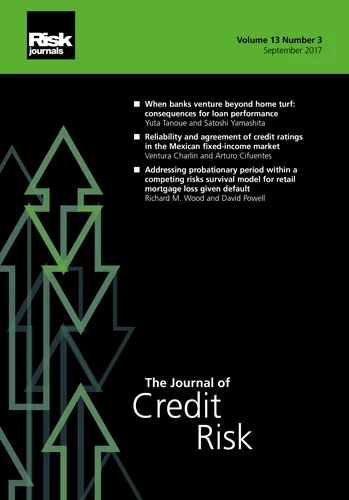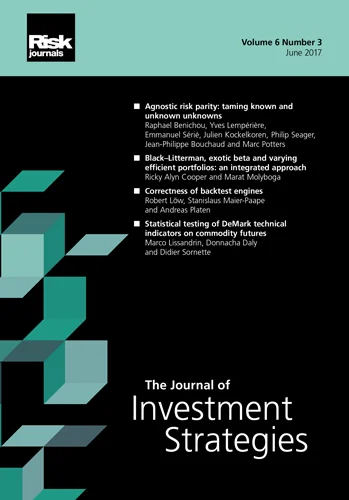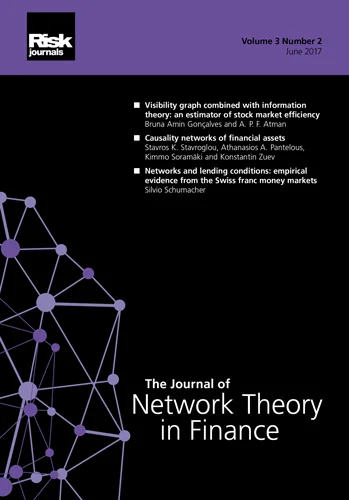Journal of Risk
ISSN:
1755-2842 (online)
Editor-in-chief: Farid AitSahlia

Default risk charge: modeling framework for the “Basel” risk measure
Need to know
- We propose a modeling framework for the Default Risk Charge (DRC) measure consistent with the requirements of the new regulatory standards for market risk for banks’ trading books.
- The properties of the proposed DRC model, the related calibration and implementation aspects and a comparison to the Standardised Approach (SA) for default risk are explored through the use of example portfolios.
- The proposals and findings are relevant for establishing industry-wide modeling standards, for benchmarking exercises between banks or for the determination of potential capital floors based on the SA.
Abstract
As a result of the Basel Committee on Banking Supervision’s Fundamental Review of the Trading Book, revised standards for capital requirements for market risk in banks’ trading books have been issued. Under the new standards, default risk needs to be measured and capitalized through a dedicated default risk charge (DRC). Although quantitative impact studies are ongoing and banks are preparing for these regulatory changes, this paper is the first to present a modeling framework for the DRC measure that projects losses over a one-year capital horizon at a 99.9% confidence level. We discuss selected risk factor models, which we use to derive simulation-based loss distributions and associated default risk figures. The model’s properties, aspects of its implementation and a comparison with the standardized approach for default risk are explored through the use of example portfolios.
Copyright Infopro Digital Limited. All rights reserved.
As outlined in our terms and conditions, https://www.infopro-digital.com/terms-and-conditions/subscriptions/ (point 2.4), printing is limited to a single copy.
If you would like to purchase additional rights please email info@risk.net
Copyright Infopro Digital Limited. All rights reserved.
You may share this content using our article tools. As outlined in our terms and conditions, https://www.infopro-digital.com/terms-and-conditions/subscriptions/ (clause 2.4), an Authorised User may only make one copy of the materials for their own personal use. You must also comply with the restrictions in clause 2.5.
If you would like to purchase additional rights please email info@risk.net








